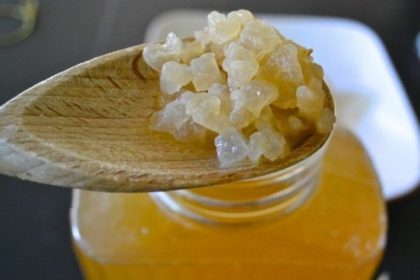
New research has explored how lactic acid bacteria (LAB) in sauerkraut and tibicos survive digestion and change gut microbiota composition.
This work, published in Frontiers in Microbiology, investigated how a fermentation production process affects LAB and yeast microbial viability and probiotic potential. Though there are studies that demonstrate health benefits of fermented foods, few “explore how being part of a whole fermented food matrix affects microbial viability during fermentation, storage and gastrointestinal (GI) transit.”
The study focused on non-dairy, botanical fermented foods, defined as “microbially transformed plant products rich in health-promoting components.” Tibicos and sauerkraut were chosen because recent research had found the microbial diversity of the two ferments “far exceeded that of dairy-based ferments, as well as containing the largest numbers of potential health-promoting gene clusters.” The tibicos studied was sugar-based while the sauerkraut was brine-based, and both contained various strains of LAB and bioactive components.
Ginger, cayenne pepper and turmeric added to tibicos were all found to have different survival rates in the digestion tract. These functional spices are often added to fermented products for their anti-inflammatory and sensory properties, but their microbial proliferation had never been adequately explored. Cayenne was the clear winner, as adding it to tibicos “significantly improved the survival rate of LAB during simulated gastric and small intestinal digestion compared to ginger and turmeric.” Ginger in tibicos had a higher rate of LAB survival than turmeric, though neither had a significantly higher LAB survival rate than plain tibicos. But adding ginger significantly increased and sustained microbial viability of LAB.
The research team — from University of Melbourne — did not perform the study on human subjects, but simulated upper gastrointestinal digestion and colonic fermentation tests using pig feces.
Some other significant findings:
- For an optimal microbial survival rate of 70-80%, tibicos should be consumed within 28 days, and sauerkraut within 7 weeks.
- Sauerkraut made with different salt concentrations did not show any significant variation in LAB counts.
- Inoculating sauerkraut with a starter culture increased LAB counts during fermentation and storage. But, by the end of storage, the LAB counts in the inoculated sauerkraut “dropped to undetectable levels.”
- Spontaneously-fermented sauerkraut LAB counts remained stable through the storage period.
“Botanical fermented foods are cheap, easily made, and consumed globally,” the study concluded. “This makes them excellent candidates for the dietary management of pro-inflammatory noncommunicable diseases, such as type 2 diabetes and metabolic syndrome.
